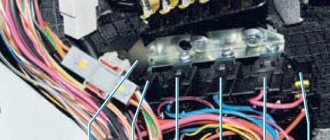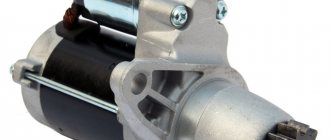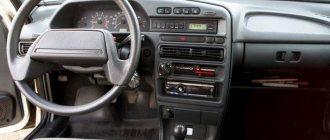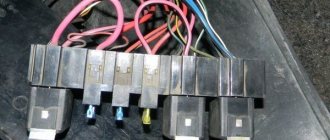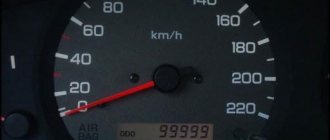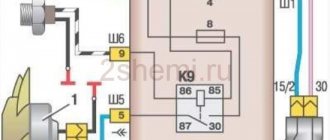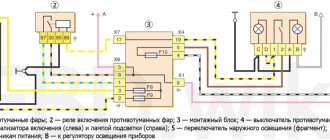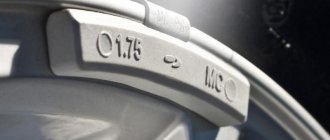A car starter is one of the important parts of a car's attachments. It is he who rotates the crankshaft of the engine, giving it the speed necessary to start. The starter on the VAZ 2114 operates on direct current and is powered by a battery. This part was inherited from the VAZ 2114 by its predecessor, the VAZ 2109, but received a few modifications, since the 14th model has been produced since 2000, it already had a gear starter installed that could rotate the crankshaft with less force and less current consumption.
Often, owners of 2114 are faced with the problem of starting the car engine, which is caused by a breakdown of the starter.
This article talks about the starter of the VAZ 2114 car, namely its design, signs of malfunction, causes of failure, cost, self-replacement and repair.
Purpose
A starter is an electrical device that converts electrical energy into mechanical energy. The mechanical energy received from the starter is directed to rotate the crankshaft through the flywheel crown, thereby delivering the crankshaft speed necessary to start the engine. The starter receives power only from the battery and uses its energy only when the engine starts. When the engine starts, the starter does not consume any energy from the vehicle's on-board network. It is a kind of DC electric machine designed only to start the motor.
Possible reasons why the starter does not turn and how to eliminate them
Experts name several reasons as a result of which the starter stops turning and the car stops starting. The first, most common, is when the battery is discharged. It can discharge in many cases. For example, if the driver does not turn off the lighting devices in the vehicle for a sufficiently long period. This situation can be encountered especially often during winter, when it gets dark early and you have to use additional lighting in the car.
Design
A car starter consists of many parts necessary for its operation. Its main parts are the rotor, stator and brush assembly. These parts are necessary to rotate the starter shaft, which engages with the ring. There is also a special electromagnetic relay on the starter that works to retract the armature. It is this that engages the bendix armature with the flywheel crown.
Fuel pump system
The fuel pump itself does not work; it is part of a special station, the so-called “fuel pump cup”. This part is a bracket for mounting the fuel pump in the tank. Also, a special coarse fuel filter is put on the fuel pump, which allows you to keep the fuel pump from dirt getting into it. A fuel level sensor and a fuel pressure regulator are installed on the glass. Together, all these parts form the fuel pump station, or popularly the “glass”.
Signs of a faulty starter
There are several signs of a starter malfunction, by which you can judge what exactly is the cause of the breakdown and then fix it.
- When trying to start, the starter clicks but does not turn;
- When trying to start, the starter does not show any signs of “life”;
- When you try to start, the starter buzzes, but the engine does not rotate;
- When trying to start, the starter barely turns the engine;
- After starting the engine, an extraneous knocking and grinding noise is heard;
If such malfunctions appear on your car when using the starter, the starter requires replacement or repair.
Let's look at each of the faults in more detail.
The starter clicks but doesn't turn over
If such a problem occurs, there may be several reasons, the first thing you need to do is:
Check the condition of the terminals on the battery. Quite often, these terminals become oxidized, which makes the contact worse and, therefore, the starter does not have enough current to start the engine.
Check battery charging. Such symptoms are possible when the battery is completely discharged; this happens quite often in cold weather or after the car has been idle for a long time with the lights on.
Also, one of the reasons may be jamming of the starter shaft in the bushing; this happens after a long period of inactivity of the car.
The starter shows no signs of “life”
When the starter is completely silent, this may be the cause of a breakdown not of the starter itself, but of the starter control circuit. For example, the ignition switch may be faulty or the battery may be completely discharged, and there may also be faults in the starter power circuit (missing ground or plus).
In other cases, the starter should make at least some sounds
The starter hums, but does not turn the engine
When this problem occurs, the culprit is most often the starter solenoid relay. It fails, thereby not moving the bendix towards the flywheel, because of this the starter cannot engage with the flywheel crown.
If this problem occurs, it is necessary to change the starter solenoid relay.
The starter barely turns the engine
This problem may lie behind:
- In a weak battery;
- Poor contact on the starter marks;
- In the interturn closure of the starter;
If the starter on your car turns the engine weakly, first of all you need to inspect the battery, check its charge, and then stretch the contacts on the starter and battery terminals. If this does not help, then you need to have the starter repaired or replaced with a new one.
Knocking and grinding
If there is a knocking or grinding noise when the starter is operating, there is most likely a problem with the starter gearbox, its gears, or the flywheel ring is worn out. The problem with the breakage of the starter gear is solved by replacing the mechanism, but if the flywheel ring wears out, it is necessary to carry out a rather complex repair, which will require removing the gearbox, as well as the clutch and the flywheel itself.
contact Group
To influence the starter, first of all, the driver turns the key in the ignition switch. The condition of this unit and wiring is also worth checking, especially if the starter does not operate when starting the engine. Damage to wires in the contact group is a common problem on domestic cars.
The status of the contact group can be checked in the following ways:
- Visually check the condition of the wiring and terminal blocks. Increased voltage on the node causes carbon deposits, melting of wires and burnout of the group tracks. In case of serious problems, these defects are visible to the naked eye;
- A more complex diagnostic method is to use a multimeter in ohmmeter mode. If there is no resistance on the device when the ignition is turned on, the contact group should be replaced.
For accurate diagnostics, you can install a known working contact group from a working machine.
Starter control circuit failure
Quite often, the starter may fail to operate due to breakdowns in the starter power supply circuit, namely, parts such as a relay, fuse, ignition switch, etc. may fail.
What can affect the starter's performance:
- Intermediate relay;
- Fuse;
- Egnition lock;
Egnition lock
Next, you need to understand how to check the ignition switch. This unit is directly related to starting the engine. The absence of an electrical circuit between the solenoid relay and the ignition switch is a common cause of malfunction.
In addition to externally inspecting the lock for damage, you can inspect the condition of the wiring inside the device body. Measuring resistance with an ohmmeter will also allow you to accurately determine the serviceability of the part. If it is not possible to turn on even the first position (ignition on) through the lock, then starting the starter directly will also not be possible. In such a situation, you should understand the wiring of the device and, if necessary, completely replace the part.
If you cannot turn the key in the lock, check the hole for foreign objects. If the key is stuck, you should call in specialists.
Removing the starter
Replacing the starter on a VAZ 2114 is quite simple; you just need to prepare the tools necessary for replacement.
To replace you will need:
- Sockets and ratchet;
- Open-end wrenches;
After which you can begin to remove the starter from the car.
- Remove the negative terminal from the battery;
- Unscrew the suitable wires to the starter;
- Remove the connector from the solenoid relay;
- Unscrew the bolts securing the starter to the gearbox housing;
- We take out the starter;
- We assemble in the reverse order;
Solenoid relay
An important element in the engine starting device circuit is the solenoid relay. Its malfunction makes it impossible to start the engine in the standard way. Checking the functionality of the element is simple - if a characteristic clicking sound is not made when turning the key to the start position, the relay is faulty.
When the machine is idle for a long time, the mechanism in the device can become sour, so tapping on the body often solves the problem. If the element is completely faulty, the procedure for replacing the part is inevitable. For a convenient replacement procedure, it is better to remove the starter completely. As you can see, all problems with the starter device can be resolved on our own, so understanding all the intricacies of diagnosing breakdowns will help save time and money.
The most common reasons: what is the problem?
It is worth noting that a malfunction can be determined by indirect signs without even opening the hood of the car. For example, if the starter turns, but the engine does not catch on or immediately stalls, the problem lies in the fuel system.
Without exception, all the reasons for the inability to start the engine can be divided into two main groups:
- malfunction of one of the fuel system components;
- lack of contact of the electronic ignition system.
It is also necessary to include the following in a separate category of faults: the engine “knocked”, the timing belt broke. In this case, expensive repairs will be required. In other cases, you can get by with a little bloodshed.
Checking the fuel pump
To check the fuel pump, you need to measure the fuel pressure in the fuel rail and check the pump itself for pressure “into the wall”.
To check the fuel pressure, you need a special device, a fuel pressure gauge; you can also use a regular pressure gauge with a hose, connecting it to the ramp through clamps.
- On a car with a 1.5-liter engine, the pressure in the fuel rail should be: 2.7-3.4 bar;
- On a car with a 1.6-liter engine, the pressure in the fuel rail should be: 3.5-4.0 bar;
Then the pressure of the fuel pump is checked, which it presses into the wall; for this it must be dismantled (on 1.5-liter engines you can simply clamp the return line). In this way, the power of the pump is checked when checking the pressure “into the wall”; a good pump presses pressure up to 8 bar.
